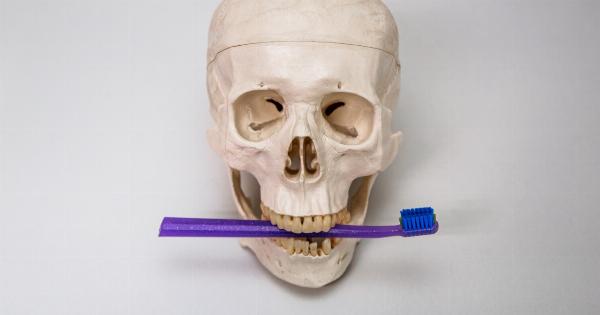When it comes to maintaining good health, one nutrient that plays a crucial role is Vitamin D. Often referred to as the ‘sunshine vitamin’, Vitamin D is unique as it can be synthesized by our body when exposed to sunlight.
However, many people around the world suffer from a Vitamin D deficiency, especially during certain times of the year or in regions with limited sunlight. In this article, we will explore the importance of Vitamin D and how to ensure optimal levels for year-round health.
The Role of Vitamin D in Our Body
Vitamin D, technically a hormone rather than a vitamin, is essential for numerous physiological processes in the body.
One of its primary functions is the regulation of calcium and phosphate metabolism, which are crucial for maintaining healthy bones and teeth. Vitamin D helps in the absorption of calcium from the intestines and promotes its deposition in the bones.
Moreover, Vitamin D also plays a vital role in supporting the immune system, as it regulates the production of antimicrobial peptides that help fight against invading pathogens.
It has also been linked to reducing the risk of various chronic diseases, such as heart disease, diabetes, and certain types of cancer.
Sources of Vitamin D
As mentioned earlier, sunlight is a significant source of Vitamin D.
When the skin is exposed to UV-B radiation from the sun, a form of cholesterol present in our skin cells gets converted into pre-vitamin D3, which then undergoes further transformations to form active Vitamin D. However, factors such as time of day, geographic location, cloud cover, and the use of sunscreen can affect this process.
Aside from sunlight, certain foods also contain Vitamin D. Fatty fish such as salmon, mackerel, and sardines are excellent sources.
Other dietary sources include beef liver, cheese, egg yolks, and fortified foods like milk, orange juice, and breakfast cereals.
Understanding Vitamin D Deficiency
Vitamin D deficiency is prevalent worldwide, affecting people of all ages. There are several risk factors that contribute to this deficiency, including:.
1. Insufficient Sun Exposure: People who spend most of their time indoors, live in areas with limited sunlight, or frequently use high SPF sunscreens may not be getting enough sunlight for optimal Vitamin D synthesis.
2. Darker Skin Pigmentation: Melanin, the pigment responsible for skin color, reduces the skin’s ability to produce Vitamin D efficiently.
Individuals with darker skin pigmentation may require more sunlight exposure to maintain adequate Vitamin D levels.
3. Aging: As we age, our skin becomes less efficient at synthesizing Vitamin D, and our kidneys may be less effective at converting it to its active form.
4. Obesity: Vitamin D is fat-soluble, and excess body fat can increase its sequestration, making it less available to the rest of the body. Obese individuals often require higher Vitamin D supplementation.
5. Medical Conditions: Certain medical conditions, such as Crohn’s disease, celiac disease, and cystic fibrosis, can impair the absorption and metabolism of Vitamin D.
The Importance of Vitamin D Supplementation
Given the challenges associated with obtaining adequate Vitamin D levels through sunlight exposure and diet alone, supplementation can be crucial, especially during certain times of the year or for individuals at higher risk of deficiency.
The recommended daily intake of Vitamin D varies depending on age, sex, and overall health, but it generally ranges from 400 to 800 international units (IU) per day.
Your healthcare provider can assess your Vitamin D levels through a blood test and recommend appropriate supplementation if necessary. Vitamin D supplements are available in two forms: Vitamin D2 (ergocalciferol) and Vitamin D3 (cholecalciferol).
Vitamin D3 is considered more effective at raising and maintaining blood levels of Vitamin D as it closely resembles the form synthesized by the body.
Benefits of Maintaining Optimal Vitamin D Levels
Maintaining optimal Vitamin D levels year-round can have a plethora of benefits for overall health:.
1. Stronger Bones: Vitamin D promotes calcium absorption, enhancing bone mineralization and reducing the risk of osteoporosis and fractures.
2. Enhanced Immune Function: Adequate Vitamin D levels support the immune system in fighting off infections and reducing the risk of autoimmune disorders.
3. Reduced Risk of Chronic Diseases: Studies have suggested that maintaining optimal Vitamin D levels may help reduce the risk of conditions such as heart disease, diabetes, multiple sclerosis, certain types of cancer, and mental health disorders.
4. Improved Muscle Function: Vitamin D plays a role in muscle function and preventing muscle weakness, which can lead to falls and compromised mobility, especially in the elderly.
Guidelines for Sun Exposure
While sunlight is a natural and effective source of Vitamin D, it is essential to strike a balance between sun exposure and protecting our skin from harmful UV radiation. Here are some guidelines to consider:.
1. Aim for moderate sun exposure: Spending around 10-30 minutes in the sun without sunscreen, several times a week, can help your body produce Vitamin D. The exact time varies depending on factors such as the intensity of the sun and your skin type.
2. Safeguard against excessive UV exposure: After the initial sun exposure, it is crucial to protect your skin with sunscreen, clothing, or seeking shade to minimize the risks of sunburn and skin damage.
Remember, even a few minutes of intense sunlight can cause sunburn, especially during the peak hours of the day.
3. Be mindful of geographic and seasonal variations: The amount of UV radiation necessary for Vitamin D synthesis depends on your location, the time of year, and the angle of the sun.
Individuals living in higher latitudes experience reduced UV radiation during certain seasons, making it more challenging to rely on sunlight alone for Vitamin D synthesis.
The Bottom Line
Vitamin D is a vital nutrient with numerous health benefits. While sunlight is the primary source, maintaining optimal levels of Vitamin D throughout the year can be challenging for many individuals.
If you suspect a deficiency, consult your healthcare provider, who may recommend a blood test and suggest suitable supplementation. Remember to strike a balance between sun exposure and protecting yourself from harmful UV radiation. By prioritizing your Vitamin D levels, you can take a proactive step towards maintaining your overall health and well-being.































